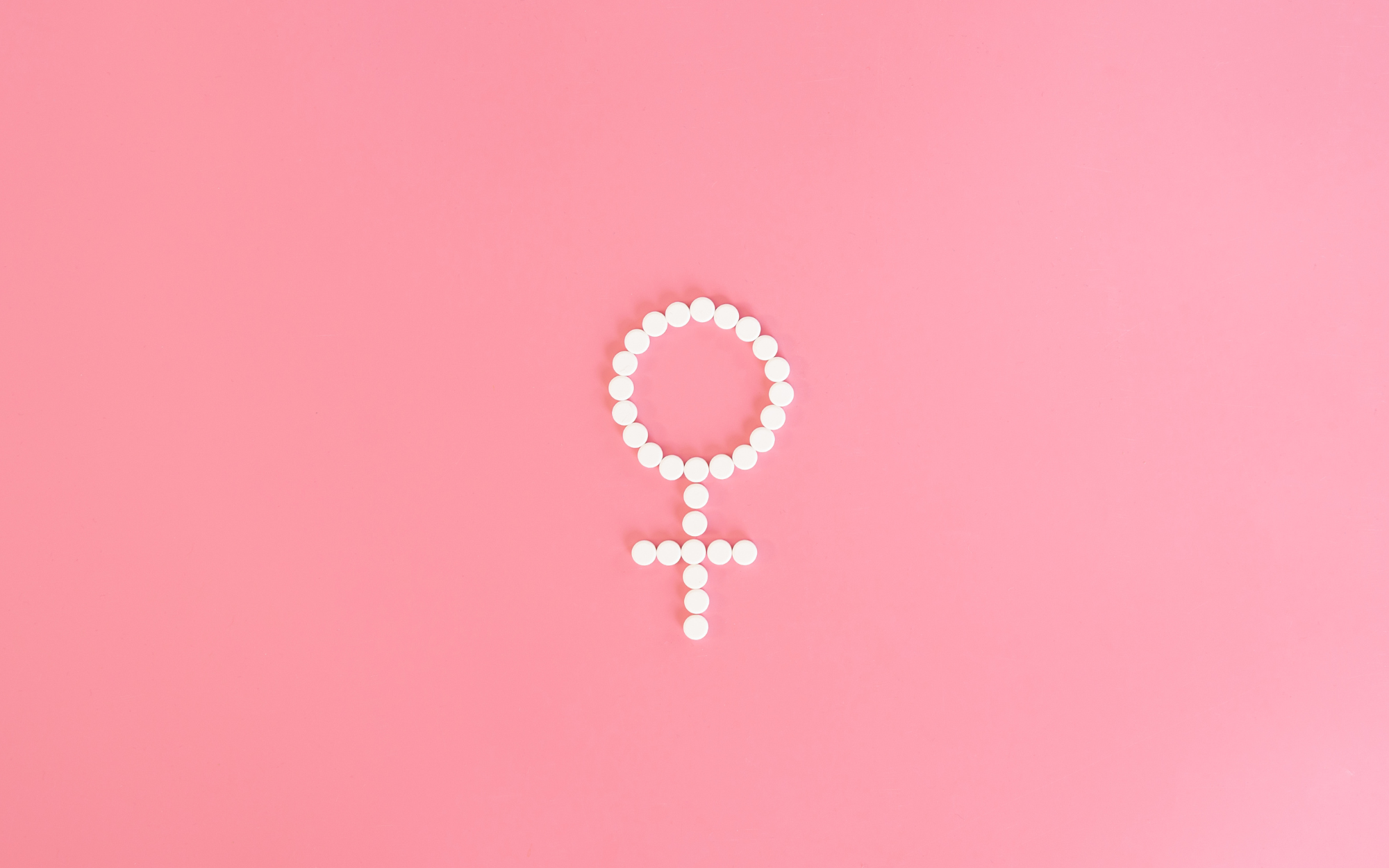Pelvic Health Issues in Women: Navigating Challenges at Every Age

Women’s health is a multifaceted journey. As we age, women face new changes and challenges that can be confusing to navigate. A crucial one is pelvic health.
From UTIs to OAB (we know, too many acronyms already), it’s essential to understand age-related pelvic health conditions so you can be proactive about your health and take care of your body through the years. Let’s break down the most common pelvic health challenges women face by age group and what you can do to prevent them.
1. Adolescence (Ages 10-18):
Teen years are a time of serious change, especially for girls. You suddenly have boobs, hair is growing where it wasn’t before, and you’re trying to navigate a brand new world of cramps and periods. All this newness can spark pelvic health issues.
Urinary Tract Infection (UTI)
A urinary tract infection happens when bacteria finds its way into the urinary tract and spreads. Girls are automatically more prone to UTIs because of the anatomy of their urethra. But menstruation can also cause a spike in UTIs during these adolescent years—especially as girls are just starting to figure out proper hygiene and period management.
Common symptoms of UTI include:
- A sudden urge to pee (urgency)
- Feeling like you need to pee all the time (frequency)
- A burning sensation when you pee
- Urine looks cloudy/bloody or smells strange
- Struggling to pee
- Lower back or abdominal pain
- Pain during sex
Antibiotics are the quickest treatment for a UTI, but infections can also be prevented by taking high-quality UTI supplements. More on that later.
Period Pain
Ugh, does it get any worse than period cramps? Not to mention the discomfort, nausea, and gastrointestinal issues that come along with menstruation. Period problems are a common pelvic health issue for young women as they navigate their first cycles.
Polycystic Ovary Syndrome (PCOS)
PCOS is a condition where your body produces too much androgen, causing small cysts to grow on your ovaries. It often shows up during your teen years to mess with your hormones, cause irregular periods, and even lead to some long-term health issues. Catching it early and managing it properly is super important to avoid complications.
2. Reproductive Years (Ages 18-44):
More health changes: incoming. This era is prime time for sexual activity, pregnancy, and menstruation. All of the above can cause infections and other pelvic health conditions in women.
UTI
Unfortunately, the prevalence of UTIs only increases with age. 60% of women will have at least one UTI in their lifetime, and most will be experienced during this age bracket. That’s largely due to the increase in sexual activity as women navigate their dating lives and start families.
Pregnancy is another common cause of UTI. During pregnancy, the urethra expands, pee becomes more concentrated, and the bladder stays full for longer. On top of that, the baby puts a lot of pressure on your bladder. All of these changes make it easier for bacteria to cause infection.
Bacterial Vaginosis (BV)
About 35% of people with a vagina will get bacterial vaginosis. BV is an infection caused by an overgrowth of bacteria. It’s usually characterized by fishy-smelling discharge, but some women don’t experience any symptoms. BV can be caused by sex (particularly unprotected sex) and pregnancy.
Yeast Infection
Yet another vaginal infection to watch for during these decades. Yeast infections can be caused by birth control, pregnancy, sexual activity, and a weak immune system—and a type of yeast called candida is usually to blame. Symptoms often include itching, irritation, pain during sex, and discharge that has the consistency of cottage cheese.
Endometriosis
This one's a common troublemaker. It's when your endometrial tissue decides to venture outside the uterus, causing chronic pelvic pain, painful intercourse, and heavy bleeding.
Endometriosis impacts up to 11% of women in the US between the ages of 15 and 44. It’s especially common for women in their 30s and 40s, making it more difficult to get pregnant.
Urinary Incontinence
Pregnancy, childbirth, and hormonal changes can weaken the pelvic floor muscles, leading to pesky issues like stress urinary incontinence and feeling like you suddenly gotta go. These pee problems get more complex and prevalent the older you get.
3. Perimenopause and Menopause (Ages 45-60):
Just like puberty in reverse, menopause brings on significant, life-altering changes in the female body. Many of these changes are pelvic health-related.
UTI
No, you’re not having déjà vu. UTIs continue to be a common occurrence for women in this age group. During menopause, your estrogen levels drop and your urethral and vaginal tissue becomes thinner. This makes it easier for bacteria to thrive in your urinary tract and cause infection.
Overactive Bladder (OAB)
OAB, also known as urgency incontinence, is a condition that makes it harder to control your bladder. Someone with OAB might have strong, sudden urges to pee, struggle to hold in their urine, or pee often during the night.
Lower estrogen levels during menopause can weaken the muscles around the bladder and urethra, causing urinary incontinence and OAB symptoms.
Pelvic Organ Prolapse (POP)
Hormonal changes, multiple pregnancies, and childbirth can wreak havoc on those pelvic floor muscles, causing your pelvic organs to take a downward slide. Pelvic floor therapy can help to strengthen the muscles and stop organs from prolapsing.
Menopause-Related Symptoms:
From hot flashes to night sweats, menopause comes with countless unwanted symptoms. Many of them impact your pelvic health, like vaginal dryness, atrophy, urinary changes, and recurrent infections.
4. Postmenopause (Ages 60+):
After the menopause journey comes a new, exciting stage of life: postmenopause. You’re free from periods, pregnancy, and all the challenges that come with your reproductive years. Unfortunately, new pelvic health hurdles come into play.
UTI and OAB
Both conditions become even more common in women during this stage of life. After menopause, estrogen levels continue to drop in the vagina. Bacteria has the momentum to grow and cause urinary tract infections.
There’s also a higher prevalence of catheter use at this age. Catheters are a significant UTI risk because they can introduce harmful bacteria to the urethra.
Cognitive function also starts to decline after 60. This has a negative impact on urine storage function, causing OAB symptoms and incontinence. Meanwhile, your pelvic muscles become weaker over time, leading to more incontinence and frequency.
How can you treat and prevent pelvic health issues?
Through lifestyle modifications and high-quality supplements, you can work to prevent pelvic health challenges during every stage of life. Here are our top recommendations to keep in mind.
Pelvic Floor Therapy
Your pelvic floor muscles are crucial for urinary health. When those muscles aren’t strong enough, it can lead to painful UTI symptoms and other problems, like constipation.
Pelvic floor therapy can help. It consists of pelvic floor exercises that strengthen, stretch, and relax the muscles. Plus mindfulness and breathwork exercises to help rewire the nervous system and improve its connection to your pelvic region.
One of the greatest benefits of pelvic floor therapy is UTI prevention. In one study of young girls, pelvic floor therapy was 83% effective in treating recurrent urinary tract infections.
New Urinary Habits
Sometimes a few small habits can make a big difference. Try these adjustments to your urinary routine to help prevent UTIs and OAB long-term.
- Always pee before and after sex. This flushes harmful bacteria out of the urinary tract.
- Wipe front to back to avoid spreading E.coli from the intestines to the urethra.
- Don’t hold in your pee for too long. This gives bad bacteria a chance to spread.
- Keep a urinary diary to track how often you’re peeing and how much pee comes out. From there you can decipher if your pee schedule is normal, a bit too frequent, or not frequent enough, and make changes to avoid OAB.
Antibiotics and Other Medications
If you find yourself with a UTI, yeast infection, or BV, your doctor will likely prescribe antibiotics or other oral/topical treatments. The symptoms should go away within a few days to a few weeks, depending on the treatment.
While these treatments are effective, they can be harmful if you use them incorrectly or too often. For example, your body can build up antibiotic resistance so that it becomes almost impossible to treat future infections.
Natural Supplements
Natural supplements for overactive bladder and UTIs are your best bet for long-term prevention. The high-quality ones are safe, doctor-recommended, and unbelievably effective. Best of all, you can avoid the endless antibiotics cycle.
The best pills for UTI prevention: Utiva Cranberry PACs.
This powerful supplement contains 36mg of proanthocyanidins (or PACs) per dose—a nutrient found naturally in cranberries that stops bacteria from sticking to your urinary tract lining.
Utiva Cranberry PACs has also been recognized by the Society of Obstetricians and Gynaecologists of Canada (SOGC). That means it has been carefully reviewed by a panel of medical professionals to confirm it’s a safe and effective supplement—all based on scientific evidence.
The proof is in the results. 94% of Utiva customers require only Cranberry PACS to help prevent UTIs. Bonus: it’s trusted and recommended by over 10,000 doctors for urinary tract health.
Other effective natural supplements for UTI: D-Mannose and Probiotics.
These supplements work together to fight off harmful bacteria and balance your microbiome and gut health. Pair ‘em with Utiva Cranberry PACs and you’ve got the ultimate infection-fighting trio.
Psst. You can find all three supplements in one handy bundle right here.
The best natural supplements for overactive bladder: Utiva Bladder Health.This plant-based solution uses a Flowens formula to strengthen urinary function, including bladder emptying, urinary frequency, and flow.
Utiva Bladder Health is backed by a study proving a 57% reduction in urgency and a 40% reduction in the bladder feeling full. This means it could help delay or avoid the need for medications. Best of all, it has minimal side effects compared to conventional prescription drugs.
Pro tip: be proactive about your pelvic health.
It’s never too early or too late to start taking action for your pelvic health. Talk to your doctor about how you can integrate better pee habits, safer sex, and preventative supplements or therapies into your daily life. Trust us: it will pay off in the long run.
Above all else, stay educated about your health. Knowledge is power, and the more tools you have at your disposal the more prepared you’ll be for each beautiful and confusing phase in your life.
The Utiva blog is a great place to start. We’re constantly posting helpful articles from healthcare professionals and experts about UTI prevention, bladder control, and women’s health. To get started, check out our UTI 101 and OAB 101 fact sheets for all the bladder basics.Knowledge is power
Sign up to our newsletter to keep learning!

- Choosing a selection results in a full page refresh.
- Opens in a new window.




